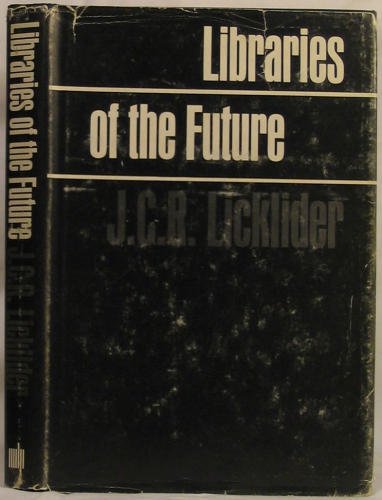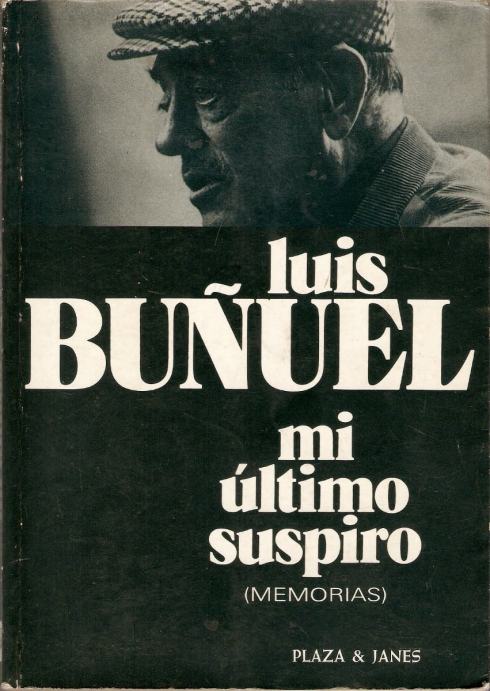J. C. R. Licklider: Libraries of the Future (1965)
Filed under book | Tags: · computing, knowledge, library, memory, technology

In this book J. C. R. Licklider discussed how information could be stored and retrieved electronically. Although he had not read Vannevar Bush’s “As We May Think,” he realized that Bush’s ideas had been diffused through the computing community enough to have provided a base for his own ideas. His theoretical information network, which he called a “procognitive system” sounds remarkably similar to Tim Berners-Lee’s World Wide Web: “the concept of a ‘desk’ may have changed from passive to active: a desk may be primarily a display-and-control station in a telecommunication-telecomputation system-and its most vital part may be the cable (‘umbilical cord’) that connects it, via a wall socket, into the procognitive utility net”. This system could be used to connect the user to “everyday business, industrial, government, and professional information, and perhaps, also to news, entertainment, and education.” (source)
Based on a study sponsored by the Council on Library Resources, Inc., and conducted by Bolt, Beranek, and Newman, Inc., between November 1961 and November 1963.
Publisher MIT Press, 1965
ISBN 026212016X, 9780262120166
219 pages
via Archive.org (where it is not available anymore)
Luis Buñuel: My Last Breath (1982-) [Spanish/English]
Filed under book | Tags: · art, biography, film, memory, politics, surrealism

A provocative memoir from Luis Buñuel, the Academy Award winning creator of some of modern cinema’s most important films, from Un Chien Andalou to The Discreet Charm of the Bourgeoisie.
Luis Buñuel’s films have the power to shock, inspire, and reinvent our world. Now, in a memoir that carries all the surrealism and subversion of his cinema, Buñuel turns his artistic gaze inward. In swift and generous prose, Buñuel traces the surprising contours of his life, from the Good Friday drumbeats of his childhood to the dreams that inspired his most famous films to his turbulent friendships with Federico García Lorca and Salvador Dalí. His personal narratives also encompass the pressing political issues of his time, many of which still haunt us today—the specter of fascism, the culture wars, the nuclear bomb. Filled with film trivia, framed by Buñuel’s intellect and wit, this is essential reading for fans of cinema and for anyone who has ever wanted to see the world through a surrealist’s eyes.
Originally published in French as Mon dernier soupir, Editions Robert Laffont, 1982
English edition
Translated by Abigail Israel
This translation first published by Alfred A. Knopf, 1983
Publisher Fontana Paperbacks, a division of Collins Publishing Group, London, 1985
266 pages
Mi último suspiro (Spanish, trans. Ana M. de la Fuente, 1982)
My Last Breath (English, trans. Abigail Israel, 1985)
Sven Spieker: The Big Archive: Art from Bureaucracy (2008)
Filed under book | Tags: · archive, archiving, art, art history, bureaucracy, database, memory, museum, photography, surrealism

“The typewriter, the card index, and the filing cabinet: these are technologies and modalities of the archive. To the bureaucrat, archives contain little more than garbage, paperwork no longer needed; to the historian, on the other hand, the archive’s content stands as a quasi-objective correlative of the “living” past. Twentieth-century art made use of the archive in a variety of ways—from what Spieker calls Marcel Duchamp’s “anemic archive” of readymades and El Lissitzky’s Demonstration Rooms to the compilations of photographs made by such postwar artists as Susan Hiller and Gerhard Richter. In The Big Archive, Sven Spieker investigates the archive—as both bureaucratic institution and index of evolving attitudes toward contingent time in science and art—and finds it to be a crucible of twentieth-century modernism.
Dadaists, constructivists, and Surrealists favored discontinuous, nonlinear archives that resisted hermeneutic reading and ordered presentation. Spieker argues that the use of archives by such contemporary artists as Hiller, Richter, Hans-Peter Feldmann, Walid Raad, and Boris Mikhailov responds to and continues this attack on the nineteenth-century archive and its objectification of the historical process.
Spieker considers archivally driven art in relation to changing media technologies—the typewriter, the telephone, the telegraph, film. And he connects the archive to a particularly modern visuality, showing that the avant-garde used the archive as something of a laboratory for experimental inquiries into the nature of vision and its relation to time. The Big Archive offers us the first critical monograph on an overarching motif in twentieth-century art.”
Publisher MIT Press, 2008
Art: Cultural Studies series
ISBN 0262195704, 9780262195706
219 pages
Reviews: Sas Mays (caa.reviews 2009), Andrew J. Lau (InterActions 2009).
PDF, PDF (updated on 2017-4-22)
Comments (2)
